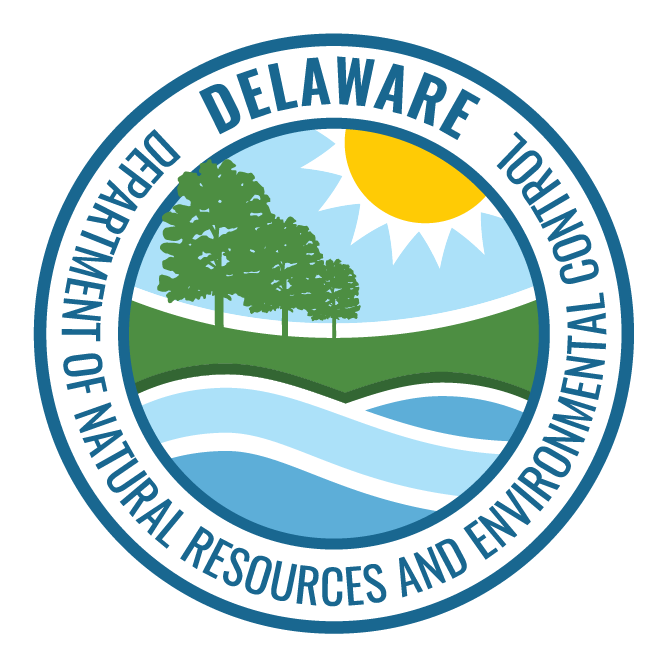Pages Categorized With: "Waste and Hazardous Substances"
Regulations Under Development
The DNREC Division of Waste and Hazardous Substances is committed to transparency and encourages community engagement as it updates and amends state regulations and related documents. This page provides information on items under development. Questions and comments are always welcome as regulations are developed, but every regulatory development will include formal commentingEast Basin Road Groundwater Site
The U.S. Environmental Protection Agency (EPA) has added the East Basin Road Groundwater Site in New Castle County to the Superfund National Priorities List (NPL). The site is an approximately seven-square mile area surrounding the city of New Castle’s public wells. [modal text=”DNREC Contacts” title=”DNREC Contacts”Are You a Solution Provider?
The DNREC Recycling Program offers the Recyclopedia search tool to help consumers find ways to properly dispose of things. The team is always looking for new solutions for recycling and disposing of items. If you offer a solution that might help, the team wants to hear from you. Use the form below to provideRecyclopedia: What Can I Recycle in Delaware?
Use the Recyclopedia search tool to find out if something is acceptable to recycle at home, if you need to drop it off, or if it is trash. Use the search bar or scroll through the featured topics below. Use the map searchGeorgetown North Groundwater Site
The U.S. Environmental Protection Agency (EPA) has added the Georgetown North Groundwater Site to the Superfund National Priorities List (NPL). The NPL is EPA’s list of priority sites requiring evaluation for possible remediation from releases of hazardous substances, pollutants or contaminants. [collapseAnswers About the Brownfields Marketplace
The DNREC Remediation Section welcomes questions about the Brownfields Marketplace. Below are some questions that have been asked in the past and answers to those questions.Contact Us
Remediation Section 391 Lukens Drive New Castle, Delaware 19720 302-395-2600
Delaware Brownfields Marketplace
The Delaware Brownfields Marketplace lists brownfield sites in Delaware that are available for potential redevelopment. Developers may apply for grants to investigate and clean up these properties and receive liability protection for past environmental contamination. Learn About BrownfieldsArchived Delaware TRI Reports
An archive of state-produced Toxics Release Inventory (TRI) reports for Delaware. Starting with data for 2020, this information is part of a national dataset managed by the US EPA. 2019 TRI Report2019 TRI Facility Profiles 2018 TRI Report2018 TRI Facility Profiles 2017 TRI Report2017Delaware Recycles
Recycling conserves valuable natural resources and energy, reduces greenhouse gas emissions and helps us take responsibility for our waste today, as opposed to leaving a burden for future generations. Recycling is an economic engine that has created job opportunities in Delaware and has significantly reduced Delaware’s rate ofCompliance and Permitting Training
DNREC’s Compliance and Permitting Section (CAPS) offers training on waste management regulations.Contact Us
Compliance and Permitting Section 302-739-9403
Episodic Events for Hazardous Waste Generators
A facility may incur an episodic event — planned or unplanned — wherein an increase in the generation of hazardous wastes exceeds the calendar month quantity limits for the generator’s usual category. Under the regulations, Very Small Quantity Generators and Small Quantity Generators are allowed episodic events. [panelPFAS Investigation Sites
This page contains a list of sites being investigated by DNREC for per- and polyfluoroalkyl substances (PFAS) in drinking water, groundwater or surface water in Delaware.Contact Us
Exposure Assessment Near New Castle Air National Guard Base
In 2019, the Centers for Disease Control and Prevention (CDC) and the Agency for Toxic Substances and Disease Registry (ATSDR) initiated an exposure assessment for perf- and polyfluoroalkyl substances (PFAS) in the community near the New Castle Air National Guard Base in New Castle County. [panelSolid and Hazardous Waste Transporter Permits
The transportation of non-hazardous solid waste (including scrap tires and infectious waste), and hazardous waste (including used oil), is subject to regulation in Delaware.Contact Us
Compliance and Permitting Transporter Permits 89 Kings Highway Dover, DE 19901 302-739-9403
Delaware’s Plastic Carryout Bag Ban
As of July 1, 2022, retailers in the State of Delaware no longer provide a plastic carryout bag made from film at checkout. Instead, they now provide customers access to a reusable bag for purchases. https://youtu.be/8g_r24uJmTg
In 2019, the Delaware General Assembly passed a law banning plastic Voluntary Cleanup Program
DNREC’s Voluntary Cleanup Program (VCP) is available to all parties who may be liable for the contamination of a property, but who wish to settle their liabilities with the Department of Natural Resources and Environmental Control under the Hazardous Substance Cleanup Act (HSCA).Contact Us
HSCA State Lead and Enforcement Programs
Delaware’s Hazardous Substance Cleanup Act (HSCA) (7 Del.C. Ch. 91) provides DNREC with the authority to take enforcement actions against responsible parties to ensure cleanup at sites with a release, or imminent threat of release, of hazardous substances.Contact Us
Hazardous Waste Corrective Action
Corrective action is required under the federal Resource Conservation and Recovery Act (RCRA) for facilities that treat, store or dispose of hazardous wastes. The Act requires hazardous waste facilities to investigate and clean up releases of hazardous waste or constituents in soil, groundwater, surface water and air. [panel type=”success” heading=”ContactNatural Resource Damage Assessment and Restoration
Natural Resource Damage Assessment and Restoration (NRDAR) is the process used to determine whether natural resources have been injured, destroyed, or lost as a result of a release of hazardous substances or oil, and to identify actions and funds needed to restore such resources. NRDAR is authorized by several state and federal environmental laws.HSCA Advisory Committee
The Hazardous Substance Cleanup Act (HSCA) Advisory Committee advises the Division of Waste and Hazardous Substances on rules, policies, and procedures relating to the cleanup and re-use of hazardous waste sites.Contact Us
Loans and Grants
Because of the the financial burden of completing environmental work at potentially contaminated properties within the State, DNREC has created different loans and grants to help property owners with remediation of contaminated properties.Contact Us
Long-Term Stewardship
Long-term stewardship (LTS) is the maintenance and monitoring of the remedial measures taken at a site to maintain the desired level of protection of human health and the environment over an extended period of time.Contact Us
Federal Programs
Various federal programs apply to sites being addressed by the DNREC Remediation Section. National Priorities List (NPL) National Priorities List (NPL) sites are sites that pose a long term remedial response action that are carried out by EPA with DNREC involvement and assistance. EPA is theEnvironmental Investigation and Remediation Consultants
The Division of Waste and Hazardous Substances maintains a list of environmental investigation and remediation consultants. This list is provided to the regulated community to help select an environmental consultant for the investigation and remediation of leaking underground and aboveground storage tank sites. [modal text=”How to Get On ThisRisk Assessment and Cleanup Standards
The DNREC Division of Waste and Hazardous Substances sets standards for risk assessment and cleanup and remediation planning for contaminated sites. Cleanup and remediation are governed under the Delaware Hazardous Substance Cleanup Act, known as HSCA (7 Del. C. Ch.91). The HSCA Human Health Risk Assessment Guidance applies only to sites within the HSCA programRemediation Laws, Regulations and Guidance
Information regarding the laws, regulations, guidance, policies, standard operating procedures (SOPs) and other documents related to the programs administered by DNREC Remediation Section.Contact Us
Remediation Section 302-395-2600
Hazardous Substance Cleanup Act Program
The Delaware Hazardous Substance Cleanup Act (HSCA) gives DNREC the ability to ensure cleanup of facilities with a release or imminent threat of release of hazardous substances.Contact Us
Accidental Release Prevention
The DNREC Accidental Release Prevention (ARP) Program ensures that facilities that use Extremely Hazardous Substances (EHS) maintain Risk Management Plans (RMP).Contact Us
Anuj Kumar Program Manager II Prevention and Preparedness Section 302-395-2523
PCB Mass Loading Studies
The DNREC Division of Waste and Hazardous Substances and Division of Watershed Stewardship are working together to study polychlorinated biphenyls (PCBs) and how they enter surface waters from hazardous substance release sites around the state. Phase I SummaryA Watershed Approach
The Watershed Approach to Toxics Assessment and Restoration (WATAR) is a watershed-scale approach to evaluating where contamination comes from, how it gets into Delaware’s waterways and water bodies, and what effects it has on watershed health. https://youtu.be/CqFQInRpVYY
PCB Mass Loading Studies: Phase II Report
The phase II report from the DNREC initiative to study polychlorinated biphenyls (PCBs) and how they enter surface waters from hazardous substance release sites around the state. PCB Mass Loading from Hazardous Substance Release Sites to Surface Waters in New Castle, Kent and Sussex Counties Part 1 — SummaryPCB Mass Loading Studies: Phase I Report
The phase I report from the DNREC initiative to study polychlorinated biphenyls (PCBs) and how they enter surface waters from hazardous substance release sites around the state. PCB Mass Loading from Hazardous Substance Release Sites to Surface Waters of the Christina River Basin Report Summary Figure 1 EvaluatedState Emergency Response Team
The State Emergency Response Team (SERT) responds to releases of oil and hazardous materials including non-fixed facility radiological releases in the State of Delaware. Incidents can range from transportation-related spills to major threats such as weapons of mass destruction. The SERT consists of the DNREC Emergency Response Team, the Delaware Emergency ManagementResponding to Environmental Emergencies
The DNREC Emergency Response Branch is responsible for responding to petroleum and hazardous materials incidents in the state. Incidents can range from transportation-related spills to major threats such as weapons of mass destruction.Contact Us
Emergency Response and Strategic Services
The DNREC Emergency Response and Strategic Services Section oversees emergency response, accidental release prevention, emergency planning and community right-to-know, and boiler safety programs. It assists with public communications and manages financial and paralegal support for the Division of Waste and Hazardous Substances.Contact Us
Large Quantity Generators
If a facility generates hazardous waste in quantities greater than 1,000 kilograms (≈2,200 pounds) or generates acutely hazardous waste in quantities greater than 1 kilogram (≈2.2 pounds) in a calendar month, that facility is defined, under Delaware’s Regulations Governing Hazardous Waste, as a Large Quantity Generator (LQG). [panelElectronic Waste
In this world of rapidly changing technology, disposal of electronic waste (e-waste) has created a growing waste stream. The Division of Waste and Hazardous Substances provides guidance for the management of these wastes by businesses under the state’s hazardous waste regulations.Contact Us
Universal Waste Rule
Universal wastes are items that are generated by a large number of businesses in relatively small quantities. Five hazardous wastes are identified as universal wastes under Section 273 of Delaware’s Regulations Governing Hazardous Waste. They are batteries, mercury-containing equipment, obsolete agricultural pesticides, lamps and aerosol cans. [panelSolvent-Contaminated Cloth Wipes
The Delaware Department of Natural Resources and Environmental Control, Compliance and Permitting Section provides the following guidance on the management of cloth wipes, including shop towels, and rags contaminated with hazardous wastes identified via characteristic or listing in the Delaware Regulations Governing Hazardous Waste (7 DE Admin. Code 1302).Managing Fluorescent Lamps
The following are answers to commonly asked questions regarding the management of waste fluorescent lamps that exceed the regulatory limit for mercury via the Toxicity Characteristic Leaching Procedure (TCLP).Contact Us
Compliance and Permitting Section 302-739-9403
Very Small Quantity Generators
If a facility generates hazardous waste in quantities of less than 100 kilograms (≈220 pounds or approximately 25 gallons) or is the generator of acutely hazardous waste in quantities of less than 1 kilogram (≈2 pounds) in a calendar month, that facility is defined, under Delaware’s Regulations Governing Hazardous Waste, as a Very Small QuantityAuto Repair Shop Waste
Auto Repair Shops generate hazardous waste that must be managed in accordance with Delaware’s Regulations Governing Hazardous Waste. Hazardous waste mismanagement adversely impacts human health and the environment.Contact Us
Compliance and Permitting Section 302-739-9403
Managing Waste
The Division of Waste and Hazardous Substances is responsible for controlling the storage, transport and disposal of solid, infectious and hazardous waste in Delaware. The Division also coordinates recycling and yard waste management. Solid Waste HazardousSalvage Yards
Salvage yards are an important part of the economy. They provide a valuable service, helping recycle what can be recycled and dispose of what cannot.Contact Us
Compliance and Permitting Section 302-739-9403
Solid Waste
Solid Waste is any garbage, refuse, refuse-derived fuel, waste wood from demolition or construction, sludge from treatment plants, or other discarded material. It can include wastes resulting from industrial, commercial, mining and agricultural operations, and from community activities.Contact Us
Hazardous Waste
Hazardous wastes are solid wastes that are inherently dangerous to handle or dispose. They include chemicals such as solvents, mercury in thermometers, and lead in paint. The Division of Waste and Hazardous Substances regulates transporters, businesses and industry so that hazardous wastes are managed properly and cleaned up in the event of a spill orUsed Oil Management
The following provides an overview related to commonly asked questions about the proper management and disposal of used oil regulated by Part 279 of Delaware’s Regulations Governing Hazardous Waste.Contact Us
Mercury and Mercury-Containing Equipment
Elemental mercury is liquid at room temperature, with a metallic and shiny appearance. It is conductive and highly volatile. Mercury can have serious health impacts on humans.Contact Us
Compliance and Permitting Section 302-739-9403
Small Quantity Generators
If a facility generates hazardous waste in quantities between 100 kilograms (≈220 pounds) and 1,000 kilograms (≈2,200 pounds) and generates acutely hazardous waste in quantities of less than 1 kilogram (≈2.2 pounds) in a calendar month, that facility is defined, under Delaware’s Regulations Governing Hazardous Waste, as a Small Quantity Generator (SQG). [column md=”5″Solid Waste Facilities
The Compliance and Permitting Section (CAPS) of the DNREC Division of Waste and Hazardous Substances issues permits for all solid and hazardous waste facilities, such as operating and closed landfills and transfer stations, recycling, composting and resource recovery facilities.Contact Us
Page: 12 of 2 total pages




